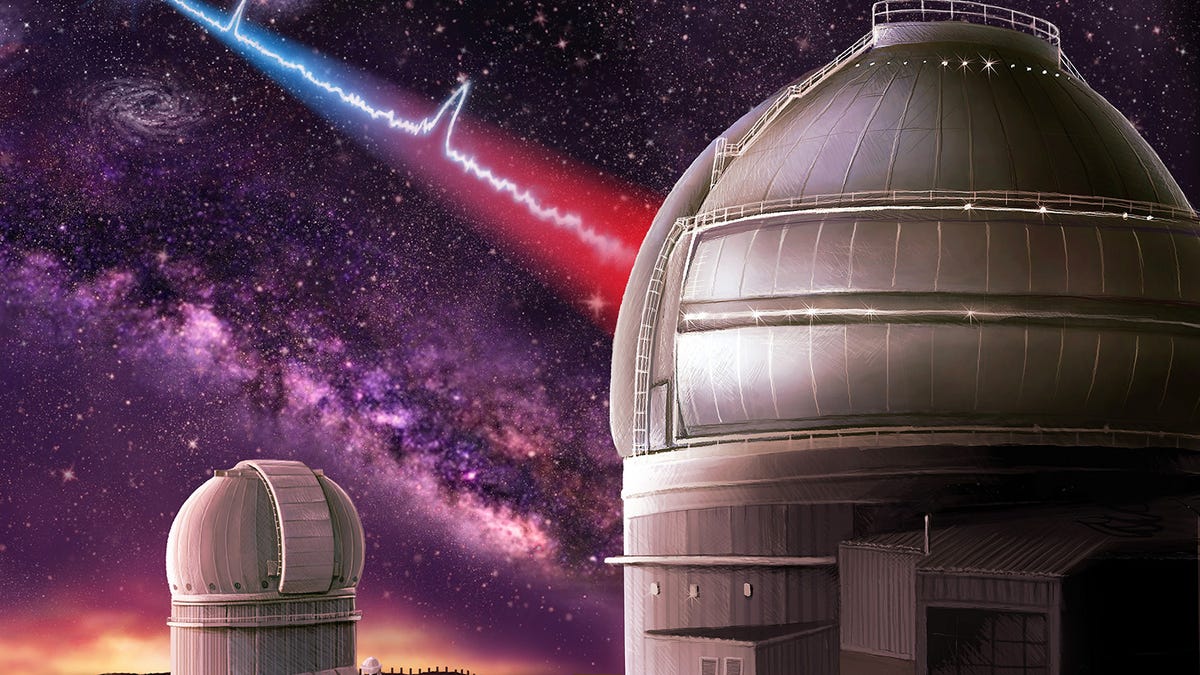Scientists search for aliens in galaxy sending weird radio signals
Astronomers reveal they've traced a mysterious fast radio burst to its source for the first time. Now, other scientists are already checking the galaxy for signs of life.

Our first contact from aliens probably won't be as simple as the 1997 movie "Contact," where Jodie Foster listens for otherworldly signals at the Very Large Array (VLA) in New Mexico.
However, there is a teeny, tiny chance it does start at the VLA.
Astronomer Casey Law hooked up 24 parallel CPUs to that same VLA to parse the gobs of data the radio telescope receives from space. Law is part of an international team that traced one of the mysterious phenomena known as "fast radio bursts" (FRBs) to its source for the first time ever.
On Wednesday, the team announced that FRB 121102, the only one of these mysterious signals that has ever been observed to repeat, originates from a dwarf galaxy nearly three billion light years away.
"This FRB was incredibly generous," Law told reporters and scientists at a press conference. "(It produced) nine bursts ... some of them very bright."
To be clear, neither Law nor any of the scientists involved in the discovery think they've picked up a signal from E.T. Law's pet hypothesis is that the signal is generated by a powerful neutron star called a magnetar.
But little is known about FRBs, which were first discovered in 2007, so even more unlikely explanations like aliens can't yet be ruled out.
"This target is our top observing priority right now," Douglas Vakoch, president of METI International (the acronym stands for Messaging Extra-Terrestrial Intelligence) told me. "I'm not holding my breath, and I'm not expecting to find any evidence of ET, but the follow-up is straightforward, so we'll make the observations out of due diligence."
That follow-up involves using the Boquete Optical SETI Observatory in Panama to search the area of the dwarf galaxy in the constellation Auriga where FRB 121102 originates from for signs of an intelligent civilization.
"So far we've found nothing that looks like the telltale sign of extraterrestrial technology," he added.
Because Boquete is an optical observatory rather than a radio telescope like the VLA, it searches for nanosecond laser pulses coming from the same galaxy. But for such a signal to cross the nearly 3 billion light years from FRB 121102's host galaxy to Panama, it would have to come from a massively powerful source. According to Vakoch, only a Type III civilization on the Kardashev scale could accomplish such a feat.
Translation: It would have to be an extremely advanced society. One that can literally control energy sources equivalent to the total output of billions of stars, or perhaps just one supermassive black hole. That's why some think a massive black hole is a more likely explanation for an FRB.
Another factor making the alien explanation even more unlikely is distance.
FRB 121102 spent almost three billion years traveling our way. So if it was sent by an almost inconceivably advanced civilization, it would have had to already be that advanced almost three billion years ago. For a little perspective, the first microscopic life forms were probably just getting going on Earth at that time.
We've seen this game of discovery and speculation before. When astrophysicist Jocelyn Bell first discovered pulsars in the 1960s, she considered the possibility she might have stumbled on an intelligent transmission.
"We did not really believe that we had picked up signals from another civilization, but obviously the idea had crossed our minds and we had no proof that it was an entirely natural radio emission," she recalled in a speech in 1977.
The possibility of aliens was briefly mentioned in the research paper published in 1968, but ultimately the notion of a pulsating neutron star was the better explanation. The discovery earned Bell's mentor a Nobel prize.
But, still ... it's worth at least checking for "little green men" or superpowerful societies shooting off insanely powerful laser pulses, right?
"You only need one mega-civilization capable of harnessing the energy of its own galaxy to make itself known across vast cosmic distances," Vakoch concurs.

